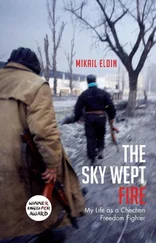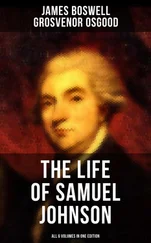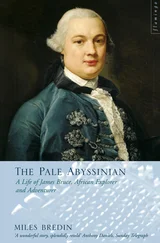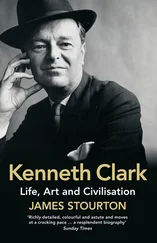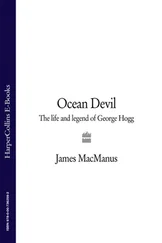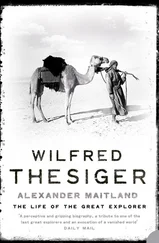About an hour passed. As the visit was about to end, a prisoner who had a Polaroid camera approached them.
“You like me to take a picture of you and your son, Mr. Carter?”
“Absolutely!” he responded.
Lesra turned and began walking toward a wall that he believed would make a fine backdrop. Carter yanked him back.
“We don’t go that way,” he said. “That’s where the chair was.”
The electric chair had been removed a year or so earlier and was now in the Corrections Department Museum in Trenton. But the bolts were still in the ground, and the imprint of the chair was visible. The picture was taken against a different wall, with the two standing next to each other, smiles creasing their faces, Carter’s arm draped across Lesra’s shoulders.
As the two walked toward the holding bay, Lesra said, “I wish I could just walk you right on out.”
“Don’t worry,” Carter said. “I’m with you.”
This encounter marked the beginning of Carter’s reemergence from his self-imposed shell. He would always have a special bond with Lesra, but he would develop far more important ties with the Canadian commune, and its members would provide vital support on Carter’s journey through the federal courts. At the same time, the group’s strong-willed leader, Lisa Peters, and Carter would become intense but doomed soulmates in an unlikely prison love affair. But all that was in the future. After his visit to the Death House, Carter returned to his cell, lay down on his cot, and stared at the picture of Lesra and himself.
2
WILD WEST ON THE PASSAIC
AT THE TIME of Rubin Carter’s arrest in 1966, his hometown of Paterson, New Jersey, was dominated by Mayor Frank X. Graves. A smallish man with heavy jowls and thinning hair, he was one of the last of the old city bosses. He controlled every department in his bureaucracy, personally answered phone calls from irate citizens, and referred to anything in Paterson as “mine,” as in “my City Hall” or “my police force.” He had no hobbies and read few books. He did have a wife and three daughters, but Paterson was his life, and he took any infraction inside its boundaries as a personal wound. Faced with white flight and fears of rising crime rates, he launched a law-and-order crusade with a hard-edged moralism.
No one doubted his audacity. Graves had won two Purple Hearts in World War II for injuries suffered during the invasion of Italy. As mayor, he usually carried a pistol. Driving around Paterson in his black sedan, he monitored the police and fire radio scanners, his ears perked for any signs of disorder. He personally led several raids on what he called “hotbeds of prostitution,” and he denounced white suburbanites who came to Paterson to pursue ladies of the night. He donned a firefighter’s suit and busted up a bookmaking operation. He ordered the police to issue a warrant to the poet and Paterson native son Allen Ginsberg for smoking pot. Ginsberg, in town for a poetry reading, escaped to New York.
Nothing flustered Graves more than Paterson’s surplus of taverns. There were too damn many of them, about three hundred and fifty, give or take a stray moonshiner with a back porch brew strong enough to rip your gut out. The mayor attacked the jazz bars and gin joints, sometimes twenty on a block, as carriers of moral decay, seedy venues of gambling, brawling, and whoring. The very names of the bars—Cabin of Joy, Blue Danube, Polynesian Club, Bobaloo—evoked exotic, bacchanalian pleasures, which he felt threatened Paterson’s social equilibrium.
Graves was particularly concerned about the so-called ghetto bars and personally led raids on them to break up fights or ferret out other wrongdoing. Indeed, “checking” these bars, which entailed cops pushing, shoving, and threatening patrons, was a favorite method for maintaining the balance of terror between blacks and the authorities, however much observers decried these tactics as Gestapo-like.
Blacks took considerable pride in their rollicking circuit of jazz clubs and playhouses, burlesque shows and barrooms. They clustered at the bottom of Governor Avenue, known as “down the hill,” abutting the Passaic River and just outside Paterson’s cheerless Central Business District. Frank Sinatra and Nat “King” Cole had played in black Paterson. So had Lou Costello, the fleshy wit who was a native son. But for the black machine operators and silk dye workers, the seamstresses and secretaries, Paterson’s nightlife was not about glamour or celebrities. It was about loud music, hard drinking, and dirty dancing. They cashed their checks on Friday and had money to spend on the weekend. Young men on the make, dressed in dark suits and narrow black ties, some with razor blades in their pockets, danced the slop, the boogaloo, or the grind. Well-dressed young women, many of them domestics, flirted with their suitors. The revelers, sometimes en masse, sometimes in a trickle, strolled through the neon-lit, one-way streets long into the night, circulating through the Kit Kat Club, the Do Drop Inn, or the Ali Baba. When these clubs closed at 3 A.M., the party moved to after-hours clubs tucked behind darkened grocery stores or to “basement socials,” where entrants paid a quarter to the house, slipped downstairs with their bottle in a brown bag, and swayed with a partner beneath an undulating red light.
The most popular black club, the Nite Spot, stood on the corner of Governor and East Eighteenth Streets. Female impersonators gave it a racy edge, while a black tile floor with drizzles of gray, a cover charge, and a kitchen grill conferred a veneer of sophistication. The crowd grooved on the wooden dance floor to Alvin Valentine’s jazzy, sweet-tempered organ and sipped Dewar’s White Label Scotch and Johnnie Walker Red (which was smoother than Black). Managers allowed in “young blood,” or bucks under the age of twenty-one, while bartenders sneaked bottles of wine to youngsters at the back door, charging them double. Paterson’s most famous resident, the boxer Rubin Carter, gave the Nite Spot added cachet. He had his own table, Hurricane’s Corner.
Drinking holes for white Patersonians, if not exactly respectable, were more … decorous. They had less colorful names—Bruno’s, Kearney’s, Question Mark—and were typically called taverns. They were scattered through the Polish and Lithuanian neighborhoods of the city’s Riverside section, through Little Italy in the center of town, and through the Irish enclaves of South Paterson. They served cream ale, a flat brew made locally with a thick foamy top and a potent kick. Many of these taverns had sawdust on the floor, pool tables in the back, and grills in the kitchen. Patrons ate burgers, watched Friday-night boxing matches on black-and-white televisions, and threw darts. They cursed with Old World epithets.
The beery dens were in all neighborhoods and welcomed all comers. Gangsters and millworkers, politicians and merchants, nurses and hookers, blacks and whites, rich and poor—they all had their hangouts, they were out there somewhere, and Frank Graves could not stop them.
It was not as if he had nothing else to worry about. The exodus of industry, commerce, and the middle class had sent his city into a long downward spiral. Paterson, only 8.36 square miles, sits in the lowland loop of the Passaic River, its southern banks lined by abandoned redbrick cotton mills, empty factories, and rusting warehouses. At night, Main Street was deserted as street lamps cast islands of light on discount stores: John’s Bargain Store, ANY SHOE for $3.33, the five-and-ten. Displays of plastic shoes and acetate dresses were fragile remnants of a once-pulsating business district. Across Main Street stood Garrett Mountain, a camel’s hump of a hill that offered a view of the world beyond Paterson. When the smog cleared and the sun was out, residents could discern Manhattan’s metallic skyline, 15 miles southeast.
Читать дальше

